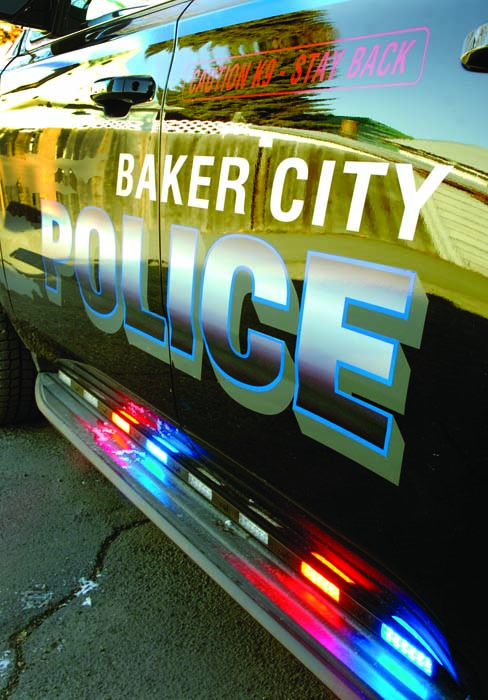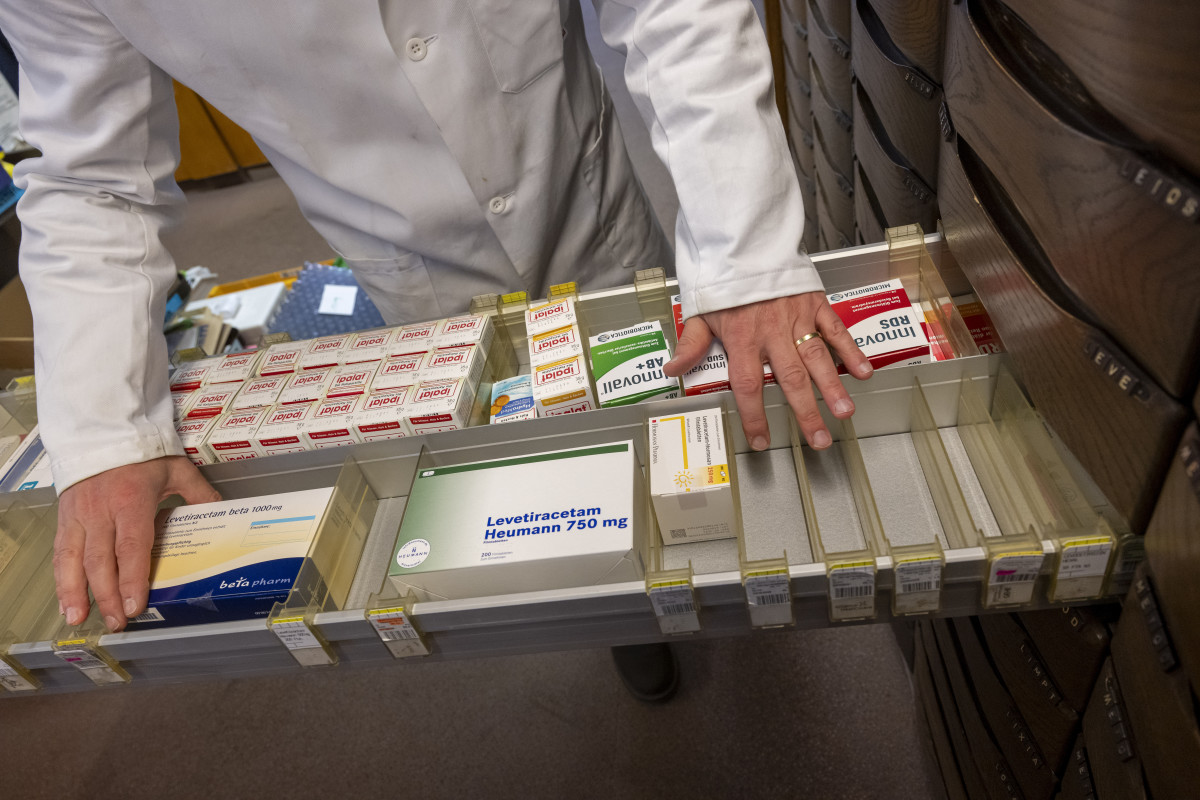‘My choice was to stay there and die or fly out. So I flew.’
Published 12:00 am Wednesday, June 3, 2009

- A heart attack grounded Dick Humphreys, but he wasnât satisfied to keep his feet on the ground and now is aiming to pass 5,000 hours of flying time. (Baker City Herald/S. John Collins)
Dick Humphreys, 71, flew through a heart attack to get medical help
Trending
Dick Humphreys’ charter pilot career ended Aug. 31, 2006.
It wasn’t his decision – but he couldn’t argue with his heart.
His job that day was to transport people and supplies to Red’s Horse Ranch, located in a deep canyon on the Minam River.
Trending
The load required two trips.
“I only took one person, one huge dog and a bunch of supplies,” Humphreys, 71, said of the first trip.
He flew back to La Grande to load up the rest, including 300 pounds of paint. Then he headed back to the ranch.
“About halfway into Red’s my chest started hurting,” he says.
He thought it was heartburn.
He landed, and the woman helped him unload.
“By then I was really hurting, but there was no telephone access,” he said.
And he knew it wasn’t heartburn.
“My choice was to stay there and die or fly out. So I flew.”
He called the Baker Airport as soon as he had radio contact – 15 minutes and 30 miles away.
“I told him I suspected I was having a heart attack and wished he’d have an ambulance when I got there,” he says. “I kept looking for flat places just in case I had to land.”
Airport mechanic Tom Holland took that call.
“He kept checking on me,” Humphreys says.
He made it, and landed the Cessna 172 Skyhawk.
“The guys were all waiting for me,” he says.
By that time, the pain in his chest had grown to an intense pressure – a feeling Humphreys’ friend described as a cowboy standing on your chest digging in a boot heel.
The ambulance arrived minutes later and rushed him to the emergency room at St. Elizabeth Health Services.
“They gave me clot busters and whatever else,” Humphreys says. “It finally cleared and that’s the last pain I had.”
But he was headed to Boise, by orders of Dr. Steven Delashmutt.
“He said, ‘you need a cardiologist and I’ve already called a helicopter.’ And away we went to St. Alphonsus.”
Dick’s wife, Jerri, was able to hitch a ride with him.
That was Thursday night.
“My family was planning a reunion on Sunday in Fairfield, Idaho, where I grew up,” he says.
His three children were already heading to Idaho, so they all showed up at the Boise hospital.
The next morning Humphreys went into surgery and doctors inserted a stent, which helps keep the artery open.
His doctor explained the treatment like this: “In Baker they gave you the Drano, and I use the Roto Rooter.”
One of his nurses put his situation in a different perspective.
“He said, ‘you don’t know how lucky you are – the artery that was blocked on your heart we call the widow maker.’ “
That artery was 80 percent blocked.
He was released by noon on Sunday.
“I made it to a couple hours of the reunion,” he says with a smile.
Looking back, he had subtle hints of the impending heart attack during the week before.
“I just thought it was upset stomach. Take an Alka Seltzer,” he says.
His recovery just took time, he says, and he had a checkup with a stress test six weeks after surgery.
“It did damage my heart,” he says of the attack.
The Federal Aviation Administration requires a six-month hiatus from flying after a heart attack, and only reinstates a pilot’s license after he or she passes an FAA test.
Humphreys was deemed “normal enough to fly” after that six months, but he was granted a limited Class II license, which meant he could fly charter assignments only as part of a two-pilot team.
But charters hardly ever require two pilots.
“Basically, my professional flying career ended on the day of the heart attack,” he says.
But he’s been flying for 40 years, so he wasn’t about to let a little thing like that keep him grounded.
Humphreys got his pilot license in 1969, and right now he’s just shy of 5,000 hours.
“I want to get five thousand,” he says with a smile.
These days he flies with his friend, Buck Buckner, whenever the occasion arises.
Flying wasn’t the only change caused by the heart attack. He had to change his lifestyle, too, with healthier meals and more exercise.
“The main lifestyle thing is to cut out cholesterol,” he says.
Then he lists the foods on the “off-limits” list: beef steak, ice cream, doughnuts, fries.
“Anything that tastes good,” he says. “I went a year without eating a hamburger.”
For physical fitness, he tries to log about five miles of activity at least five days a week – two miles on his Nordic Track in the morning, and then a 2.6-mile afternoon walk that takes him uphill on Reservoir Road and past Quail Ridge Golf Course.
His most recent stress test was two months ago, and he did so well the technicians finally made him stop.
“When my nine minutes rolled by, they said ‘can you go more?’ I said yes. But they said that was enough.”
(The report did note that he could have kept going.)
Humphreys’ interest in flying goes back to his childhood, when his oldest sister soloed at 16 and got her license at 17.
He and his brother would often accompany her on flights.
Then he earned a degree at Oregon State University and become a wildlife biologist for the Oregon Department of Fish and Wildlife. He spent a year and a half in La Grande, then transferred to the Baker office.
Well, office is a bit of a stretch – for quite a few years he worked out of his home.
Part of his job was to survey animals from the sky, and one day his pilot said, “It’d be a lot safer for both of us if you knew how to land.”
So Humphreys began learning, bit by bit, the basics of flying.
Then “Paint Your Wagon” came to town, and he sold his Harley motorcycle to someone from the production and used the money for flying lessons.
His piloting meshed with his wildlife work for game counts and telemetry (monitoring animals with radio collars), and for the last four years before retiring he was an alternate pilot for the Oregon State Police.
He can tell story after story from his 30 years with ODFW.
He remembers well the winter of 1983-84 when he and others fed 8,000 deer 75 tons of food a week. Layers of snow and ice made it impossible for the animals to dig down to the ground.
“The animals could not get through it to eat – they were starving on the side of the road,” he says. “For the first half of the winter, we were doing it all (distributing feed) by hand.”
Another tale involves a starving calf elk near Sumpter, and the story sounds just like a circus scene.
The calf got caught in a barbed wire fence, and Humphreys managed to get hold of the elk’s back legs. But fellow biologist Jerry Grover was stuck in a snow bank and couldn’t help.
Suddenly a man stopped and asked if he could help.
He did, the calf was loaded and the biologists thanked him.
“Then he said, ‘I really should be giving you a ticket.’ He was the safety inspector for the state.”
Then there was the buck deer caught in an old downed powerline near the Auburn feed site.
When he showed up, an OSP officer was already there, so Humphreys started to get a rope.
Then the officer hollered that he had the deer under control, so Humphreys went to help.
Now, sitting in his living room safe from sharp antlers, Humphreys reflects:
“I should have got the rope.”
With hold of the buck, Humphreys said they had to take the wire off. He told the officer “When we let go, run as fast as you can.”
They did, and the buck went after Humphreys.
After a tussle, he managed to get the antlers jammed into the tree.
“Then we had to let him go again.”
This time the buck went after the other guy, who flew into the air with the help of a jab in the behind. Fortunately, he had a notebook in his back pocket.
“The notebook had a puncture wound, and his pants pocket had about a foot rip,” Humphreys says, chuckling at the memory.
Over the years he learned temperaments of the different animals.
“The nicest ones are the bighorns,” he says. “The ones that’ll kill you in a minute are the mountain goats.”
Then he smiles.
“We got smarter as time went on.”









